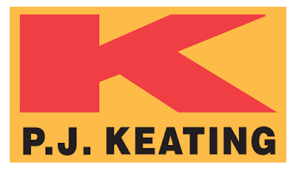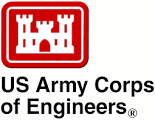News
EPA Evaluates Plan to Reduce Bay Pollutants No Longer Contained by Conowingo Reservoir
May 06, 2021
PHILADELPHIA (May 6, 2021) – The U.S. Environmental Protection Agency has completed its evaluation of a draft plan to compensate for more than 6 million pounds of Chesapeake Bay pollutants no longer being trapped in a reservoir behind the Conowingo Dam.
EPA’s evaluation of the draft Conowingo Watershed Implementation Plan (CWIP) is available on the Bay TMDL website, www.epa.gov/chesapeake-bay-tmdl.
The evaluation commends the drafters of the CWIP, while raising concerns over distinguishing CWIP restoration actions from others already pledged, as well as the need for dedicated funding mechanisms and public sector financial commitments for the additional work. The evaluation also recognizes that the Chesapeake Bay Program partnership has not yet decided on the target end date for implementation of the CWIP.
When the Chesapeake Bay Total Maximum Daily Load (Bay TMDL) was established in 2010, it was estimated that the reservoir behind the Conowingo Dam would trap sediment and associated nutrients through 2025. However, studies conducted over the last several years demonstrated that the reservoir has reached dynamic equilibrium (i.e., the reservoir is near full capacity).
The Chesapeake Bay Program’s Principal Staff Committee agreed to develop a separate and collaborative Conowingo Watershed Implementation Plan (CWIP) that would outline the programmatic and numeric commitments that could be taken to reduce the adverse water quality impacts to the Chesapeake Bay resulting from Conowingo Dam infill, as well as a timeline at which those reductions could be achieved.
The draft WIP was developed by a steering committee consisting of representatives from the Chesapeake Bay Commission and each Chesapeake Bay watershed jurisdiction – Delaware, the District of Columbia, Maryland, New York, Pennsylvania, Virginia and West Virginia – and supported by the Center for Watershed Protection.
“We appreciate the extensive work and analysis reflected in this draft plan,” said EPA Acting Regional Administrator Diana Esher. “We trust our review will help identify the next steps to putting this plan into necessary action.”
The draft CWIP outlines plans for an additional reduction of 6 million pounds of nitrogen and 0.26 million pounds of phosphorus needed to mitigate the water quality impacts of Conowingo Dam infill.
In its evaluation, EPA commends the Center for Watershed Protection and the steering committee for developing a Best Management Practices (BMPs) implementation scenario that meets the necessary nitrogen reductions and focuses restoration activity, primarily agricultural BMPs, in the most effective areas of the Susquehanna River Basin.
The evaluation states that the draft CWIP “proposes a comprehensive process for identifying, selecting, and implementing BMPs through a tiered system and technical review team. Also, considerable effort has been expended to conduct local engagement and outreach with affected communities to educate stakeholders about the CWIP process and establish preliminary expectations for implementation efforts that go above and beyond” what is reflected in the jurisdictions’ existing Phase III Watershed Implementation Plans.
EPA states that it “recognizes that the CWIP will continue to evolve based on implementation successes and challenges,” but noted that “critical to the successful implementation of the CWIP is to ensure that the plan complements and does not compete with the jurisdictions’ Phase III WIPs in terms of opportunities for BMP implementation and resources, including technical assistance, staffing, and funding.” The evaluation states that “it is currently unclear” how the two efforts will be distinguished and recommends that the final CWIP “provide more detail on where exactly implementation will be targeted and the affected stakeholders.”
The EPA evaluation also recognizes that the CWIP financing strategy is still under development, but notes “there is currently little confidence that the CWIP will be fully implemented to meet the necessary nitrogen reductions without dedicated funding mechanisms in place and the commitment from the public sector to provide an initial investment to initiate CWIP implementation.”
In September 2019, EPA awarded nearly $600,000 for three projects to further the Conowingo WIP, including support for overseeing its development and implementation to the Center for Watershed Protection. Each watershed jurisdiction contributed a portion of their EPA Chesapeake Bay grant funding to the award.
While EPA does not approve or disapprove a WIP, EPA provides its evaluation for the benefit of the Chesapeake Bay Program jurisdictions and, as appropriate, may provide recommendations for strengthening a WIP.
Best Course I Have Taken









































































































